 Fort Campbell, KY – The Gander Crash happened 26 years ago yesterday, but for those who lived through the aftermath of that tragic plane crash the memories are as fresh as if it happened yesterday. Fort Campbell and the 101st Airborne Division honored the memories of those who lost their lives in a short ceremony yesterday.
Fort Campbell, KY – The Gander Crash happened 26 years ago yesterday, but for those who lived through the aftermath of that tragic plane crash the memories are as fresh as if it happened yesterday. Fort Campbell and the 101st Airborne Division honored the memories of those who lost their lives in a short ceremony yesterday.
The Ceremony was held at the Task Force 3-502 Memorial. On this memorial are the names of the 248 Screaming Eagles who where killed in the crash; along with a verse from the Bible, Isaiah 10:30-31, which reads “They that wait upon the Lord shall renew their strength: they shall mount up with wings as Eagles.” The memorial also features a grove of trees in perfect formation, each one represents a soldier who lost their life, a small stone sits at the foot of the tree identifying the specific soldier that tree represents.

The ceremony was opened by Spc. Hart the voice of the Eagle, who welcomed the dignitaries and family members who were in attendance. He was followed by Chaplain Megan Hodge who gave the invocation.
Almighty God we come before you today to honor and remember the lives of the 248 soldiers who were killed 26 years ago this day. Our hearts go out to their family and friends and loved ones that have felt the pain of losing those who were on board. Father we share today in their great sorrow. Today that pain is still real and strong and so we ask for your comfort and peace to abide in this place among us. May you lift our heads as we look for hope beyond this earthly life knowing that our darkness is not darkness to you. Bless this ceremony today as we honor our fallen. In your holy name I pray.
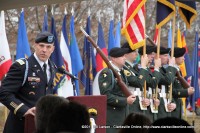
She was followed by the Commander of the 2nd Brigade Combat Team, Col. Daniel R. Walrath.
Good afternoon distinguished guests, family and friends of our fallen, current and former members of the 502nd infantry regiment and strike brigade combat team, 101st Airborne Division, Fort Campbell. Thank you all very much for attending this annual ceremony to ensure we never forget the sacrifice of our fallen Eagles.
26 years ago in 1985 though we did not know it at the time we were experiencing the waning years of the cold war. This was a war that did not involve fighting or combat action, and our army was becoming involved in a new mission set referred to as peace keeping. The United States had recently begun participation in the Multinational Forces Observer duty in Sinai Egypt. At the time, this duty was known as a real world mission, a mission of significant importance to our country and the United Nations to maintain stability in a region that only recently known violence and conflict.
The 3rd Battalion of the 502nd Infantry regiment had just completed what was the third rotation of this new mission and was in the process of returning home. They had performed their mission successfully, had done what was expected of them, and had achieved desired results.
They had been away from home for over 6 months and were looking forward to being home for the Christmas Holiday. Then as now Strike soldiers had fought where told, and won where they fought meaning they had executed whatever mission was required of them to the best of their ability.
As their aircraft lifted off after their final refueling stop in Gander they knew with certainty when the aircraft landed next that they would be home safely at Fort Campbell. I am sure that their thoughts turned to envisioning welcomes and reunions with family and friends at the airfield hanger. We have all had similar experience I am sure on returning from recent deployments.
And the family had received that final phone call or notification that their soldier had begun the final leg home and were already assembling in the hanger no doubt hanging signs and discussing reunion and holiday plans with fellow family members and friends. Our families have all had similar experiences during recent welcome home ceremonies.
26 years ago this morning Arrow Airlines flight 1285 took off from Gander Newfoundland in Canada with 8 crew members and 248 soldiers, non-commissioned officers, and officers from units across this division the majority being from 3rd Battalion of the 502nd Infantry Regiment. The flight crashed immediately following takeoff and there were no survivors.
During the last ten years of constant conflict we have become used to causalities and loss. But in 1985 I can barely imagine the shock of learning of this terrific loss, and the impact that it must have had on the entire community; units, families, the installation, Clarksville, Hopkinsville, and Oak Grove. Only the strong bonds of this community could have seen everyone through this tragedy.
But this is what makes military service so unique in my estimation. No matter if a solider performs every task correctly and to standard, no matter if a unit completes a mission successfully, soldiers remain exposed to risk and loss. The soldiers from this Battalion had completed their mission successfully, had done everything correctly.
We also remember one year ago today, six soldiers from Bravo Company, 2nd Battalion, 502nd Infantry Regiment. They were performing their mission to standard when they were attacked by a suicide bomber with a vehicle packed with explosives at Combat Outpost Ware in Southern Afghanistan these six soldiers lost their lives.
The fact that soldiers selflessly render themselves to this continual risk freely and gladly is what makes soldiering the noblest and most honorable profession.
So today let us remember these 248 heroes that willing went forward to keep the peace for others. They stood watch on the wall when others could not, or would not regardless of risk. Let us continue to remember their selfless service. We honor them by this monument; we honor them by the trees behind me dedicated to each soldier, non-commissioned officer, and officer. And we honor them most importantly by continuing our service to our nation and continuing their mission. We do this today. Air Assault, Strike, God Bless America.
His remarks were followed by the laying of a wreath, the playing of taps, and a 21 gun salute to the memory of the fallen.

Following the ceremony I had the opportunity to speak with several family members, along with General Hubert Smith.
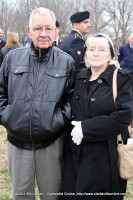
Audrie Caudill and her husband was on hand to remember their youngest son, 20 year old son Private Phillip R. Caudill. When asked about that day, strong emotions threaten to overwhelm her, yet she is eager to tell the story.
We knew he was on his way home. I was sitting at home waiting on him to call and say “Mom, I am back come and get me,” because we knew they would be released for Christmas soon after they got here.
I was watching the morning show; it was good morning America at that time on Channel 12 at home. Joan Lunden came on and made an announcement that a plane had crashed in Canada with soldiers, and I knew. I didn’t want to believe it, but I knew it was his plane from then on.
It was late that night before the men came in the middle of the night to tell us, but we knew it was his plane because we were there at Fort Campbell when they left. They left 1, 2, and 3. I believe he left on the second plane. I did not know that the first plane came back the day before, so I was going back and forth all day was it the first or second, and it was the second, and he was on it.
She feels the memorial and grove of trees planted by Fort Campbell is a fitting tribute to the soldier’s memories. Her son Phillip joined the service because he wanted to, and “He really really loved it,” Audrie said. She has a strong attachment to Fort Campbell, “We have been here for many many things, every time we get an invitation we are here,” and for the soldiers who serve on the post, “Every time we hear something happening here at Fort Campbell it is just like another one of our kids got hurt, we love all of them like they are our own.”
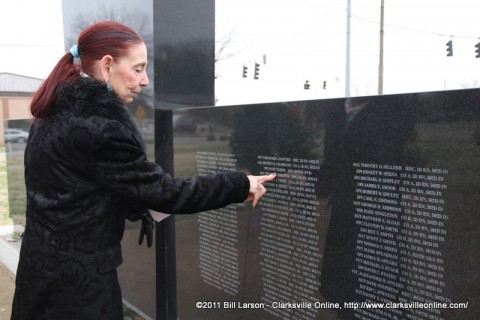
Malinda Parris was on hand to remember her husband CW3 Rudy Parris.
I had been up until at least midnight getting all the Christmas decorations up, looking at everything from the right side, from the left side, the front, and back to make sure that no matter which way he looked at it; it would be perfect. So I went to bed.
He called me about 3:30am and he was in Gander, and he told me that he was getting ready to board. “Be home in 3 hours; kick the cat off the bed. I am on my way,” so I went back to bed.
I got up about 6:00am. About 6:30 I got the phone call. I was in charge of the phone tree to call all of the girls when something was going on or they needed to know something, and it was my commander’s wife who said “There has been an accident!” I am like “Oh Great” because I was thinking on the runway. And I said “Oh great, by time they get another plane up there it will be tomorrow before they get home,” then she said those words that I will remember forever, “There were no survivors.”
The minute she said that and this was back before the any of cable news, so you couldn’t get 24×7 like on Fox or any of those. So I had the radio on and at the same time she said no survivors the radio said the exact same thing, and that was the last thing I heard.
The support from the Army was overwhelming in the beginning she said, and probably at least 10-15 years worth. But as time passes the intensity has lessened. “They are there for you if you want them, and you still have all of the privileges, but many of the people who remember it first hand have moved on to other posts or retired,” she said.
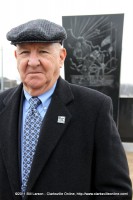
General Hubert Smith has since retired from the Army, but at the time of the crash he was a Colonel serving as the Commander of the Division Support Command for the 101st Airborne Division, and he will never forget that day…
That morning we were all excited because we had the remaining elements of the 187th Task Force coming in out of the Sinai, and we were looking forward to going out to meet them with the family members.
At about 5:30 in the morning I received a call from the Chief of Staff’s wife who said they were watching television and a bulletin had just been announced that an aircraft had gone down in Gander Newfoundland and it had filed a flight plan for Hopkinsville, Kentucky. At that point in time we knew that-that had to be our aircraft.
We basically started calling all of our subordinate commanders; I was a Colonel at the time. I had four battalions that had troops on that aircraft, a total of 13 among the taskforce. We started calling our battalions and telling them to muster their commanders at the second brigade fitness center where they families were already converging.
Once we got to the fitness center people there were not aware of anything occurring. We were asking the loved ones which unit they were from so we could get our chain of command with the surviving members of the troops in our units. When talking to them they were so joyful because they had just talked to their husbands to say we are on the ground in Gander we are refueling, I got you a dozen roses or I got you a surprise and we will see you in 4-5 hours.
At that point in time we tried to identify the families by units to break the news to them that the aircraft had gone down, we don’t have any word of how bad it is. Most of the families languished there waiting for further news. They were trying to process the news as they had just talked to their loved ones.
A more tragic thing was as families continued to arrive they were taken aback with all of the crying and gnashing of teeth. We had more people coming in than we were able to handle. So we were having to run out and grab them as they were confronted with these reactions. It was awful. We were trying to let people know that we cared for them, that the aircraft was down, we don’t have any details.
By about 9 o’clock in the morning we had gotten word that there were no survivors. So if I recall correctly General Patrick who was the Commanding General, was able to tell them that we confirmed that there were no survivors; and he did a wonderful job handling this thing.
A lot of the family members never showed up, and we had to go out and notify the remaining family members. I had to go out and notify CW3 Bowens wife for example, as I recall she was a school teacher. I tried to notify several other but they were not at home. It was a situation you will never forget; and then of course we had the memorial service here a few days later and that was the hardest thing I have ever done in my life. I had lost troops in Vietnam but never that number, the most I had lost then was six and here we lost 200 and something.
Sacrifice is a part and parcel of service in the military, be it in lost time away from your families, or in giving your life out of the love you bear for your country. It is so very important that those of us who are here at home take time to honor the men and women who undertake the vital mission of protecting our nation in both war and peace. For the living tell them “thank you” as often as you can. For those who have made the ultimate sacrifice for our nation, you can show your respect by attending events like these. Doing so shows these families that their loves ones sacrifice was not made in vain, letting them know that you share their pain.
Photo Gallery
The Original News Stories
248 Fort Campbell Soldiers killed
Written by Sp4 James Hull
Public Affairs specialist
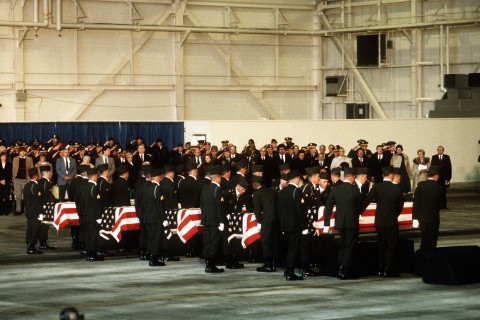
Some 248 101st Airborne Division (Air Assault) and Fort Campbell Soldiers were killed in an early morning plane crash at Gander (Newfoundland) International Airport today, returning from six months of peacekeeping duty on the Sinai Peninsula in the Middle East.
The Soldiers, representing many division and post military units, died when the chartered Arrow Air DC-8 plane they were aboard crashed on takeoff at about 6:45am, Newfoundland time, this morning.
The pilot and crew of eight also died in the crash, bringing the total number of dead to about 256.
Canadian Transport Minister Don Mazankowski said the airplane got no higher than 1,000 feet into the air before crashing.
The crash is the worst ever in Canada and is reported to be the worst air disaster in U.S. military history.
“This is the deepest and most heart-felt tragedy of my time in the Army,” division and post commander Maj. Gen. Burton D. Patrick told about 70 news reporters at a 12:30pm news conference today. “The first priority of this division now is the Families.”
The general said Family members who had gathered at a post gymnasium to greet the home-bound Soldiers had been informed of the tragedy.
Patrick said a Family support center had been set up within hours of the crash and that other Fort Campbell Families were assisting in comforting survivors.
“This division and the entire United States Army is in mourning today. We have suffered a tragic loss. Cohesion and comradeship are like still waters…they run deep.”
“This tragedy will have an everlasting impact, but the fiber of this division is strong,” Patrick said, obviously moved by the tragedy.
“We will take care of the Families, reconstitute our forces and continue with the mission. They wouldn’t want it any other way.”
Patrick said that since about 45 percent of the Soldiers stationed at Fort Campbell were married, he estimated approximately half the Soldiers in the crash could have been married.
As Patrick spoke, a “response team”, headed by Maj. Gen John S. Crosby, was headed to the scene of the crash to “provide all possible assistance.”
Once the Soldiers’ bodies are claimed by the Army, they will be transported to Dover AFB, Delaware, where they will be identified.
Patrick said Families will be notified from Dover and that names of the killed Soldiers will be released to the public as the Families are notified.
The commander said a memorial service will be held “as early as practical next week.”
This was the third of four contingents returning from the Sinai mission. About 970 Soldiers were in the task force. The rotational force had been part of the Multinational Peacekeeping Force and Observers since July.
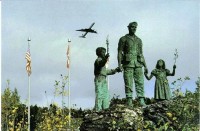
The Multinational Peacekeeping Force and Observers on Egypt’s Sinai Peninsula has troops from the United States, Fiji, Colombia, Australia, New Zealand, the Netherlands, Italy, Uruguay, France and England. They are under command of military officers from Norway.
The MFO was created as a peacekeeping force to police the disengagement of Israeli and Egyptian troops under the two nations’ 1979 peace treaty, the only such treaty between Israel and an Arab country.
The ill-fated DC-8 had flown from Cairo, Egypt to Cologne, West Germany, where it refueled. Gander was the second refueling stop and last leg of the journey to Fort Campbell.
Gander International Airport is located approximately 150 miles northwest of St. John’s, the capital of Newfoundland on Canada’s Atlantic seaboard. It is often used by planes traveling between North America and Europe.
The Soldiers returning from the Sinai were being replaced by the 3rd Battalion, 60th Infantry, 9th Infantry Division from Fort Lewis, Wash., in a rotation which began earlier this month.
Although the exact cause of the crash has not been determined, officials have ruled out sabotage. The accident remains under investigation.
3-502nd bears terrible cost
Written by Sp4 James Hull
Public affairs specialist
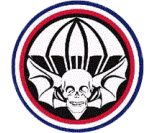 Considering there are scores of agency representatives, technicians and volunteers to comfort and aid the 248 Families affected by last week’s tragic Arrow Air DC-8 crash, there is one group, almost as keenly affected, undergoing the unenviable task of “continuing with the mission.”
Considering there are scores of agency representatives, technicians and volunteers to comfort and aid the 248 Families affected by last week’s tragic Arrow Air DC-8 crash, there is one group, almost as keenly affected, undergoing the unenviable task of “continuing with the mission.”
They are the Soldiers of the 3rd Battalion, 502nd Infantry Regiment. The Soldiers whose comrades perished in the crash. The Soldiers who worked side by side with those who died.
Military bearing means more now to the Soldiers of the 3rd Bn., 502nd Inf. Rgt., than perhaps it does to any other military unit.
“We’re all leaning on each other,” said Chaplain (Capt.) Richard Murdoch.
Murdoch bears an extra grief. Until he was replaced by (Capt.) Troy Carter earlier this year, he was the chaplain for this grieving battalion. The men who died in the DC-8 crash were his men. And sadly enough, Carter was also killed in the crash.
But Murdoch remains strong. “The thing is,” he said, “we look to the chaplain as God’s agent for blessing and comfort.”
In an effort to prevent the Soldiers from focusing on their own grief, Murdoch helped put together a system whereby each of the Families in the Fort Campbell area has been assigned a Soldier from the battalion.
The Soldiers augment the work of the official assistance officers assigned to each Family.
“It’s a safety net,” Murdoch explained, “so that we know someone from this command is contacting our Families every day. Our Soldiers act as a point of contact to the assistance officers.”
Acting battalion commander, Maj. Frank Hudoba, battalion executive officer, has also kept the Soldiers busy by scheduling daily briefings and updates with battalion leaders.
“The biggest thing is to keep busy,” Hudoba said. “To do for the people that suffered a greater loss than we did.”
Hudoba said the unit has the material to print a yearbook containing a special section on the lost Soldiers, and he is soliciting suggestions from his men on the establishment of a “living memorial” for the 248 dead.
When the Families have left this area, they will have cherished photographs, letters and other articles of remembrance to hold on to of their loved ones.
The Soldiers of the 3rd Bn. 502nd Inf. Rgt. will have each other.
Maj. Gen. John Herrling Answers Questions
Do you remember December 12th, 1985? What you were doing? Where you were? And how you felt when you got the news of the crash?
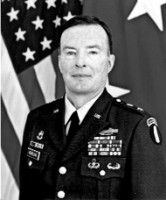
“I remember it like it was yesterday. At the time I was in the kitchen getting ready to go off to the brigade headquarters for PT. It was about 6 in the morning and I got a call from the brigade S3 and he said he had heard the news on TV and they were reporting a crash of a military aircraft in Gander, Newfoundland and he said ‘that’s a strange coincidence, our guys are coming back from the Sinai.’ I walked across my driveway to my next door neighbor who was the chief of staff of the 101st. Col. Bruce Moore and I relayed the conversation with Bruce and he got a hold of the 101st operations center. So I went off to the brigade headquarters and he went to the division headquarters and he called me maybe 15-20 minutes later and he said, ‘I got some bad news for you, that was your plane that went down and right now they’re reporting no survivors,’ and that’s how I found out about it.”
“I had a real feeling of despair but my real concern was for the Families and the friends that would be gathering in a couple of hours to welcome that group back to Fort Campbell. That was the real focus of my attention.”
“I just knew that all of us in the 101st were going to have to do everything that we could for the families and friends of those that had been lost in that plane crash. So we started putting everything together and figuring out how we were going to do that. My big concern was we were having a welcome back ceremony in the 2nd brigade gym, I believe it was scheduled for 9:30 a.m., and I had to figure out what I was going to say to those people when I walked into that gymnasium.”
The rumors were out and the news was reporting the crash so there were families and friends that had already assumed it was the flight that they were waiting on that wouldn’t make it home.
“There were rumors and people had already heard the television reports and there was a lot of concerned folks but I still had to get up and make a formal announcement.”
“In the time I had between confirming that was our group of folks and walking into that gym I had some time to write myself some notes.”
How does a commander deal with such a tremendous loss?
“It was the most difficult period in my Army career I think and that particular morning was probably the most terrible time I had in the 35 years I spent in the military. You just have to sit there and think for a minute on what you can do for the families and all the friends that had gathered there to welcome them home. That’s your first and primary concern, what can we do to help the families.”
In just three hours, he coordinated with the division personnel officer, division adjutant general and the hospital to put together a group of people that could be most beneficial to the families.
“I knew when I walked into that gymnasium and made the formal announcement we were going to have some very troubled people. So we needed medical staff in there to help deal with all that.”
How did the crash affect the rest of your military career?
“Once you go through a tragedy like that you realize that this can happen at other places and other times. I think for the rest of my time on active duty, whenever we were involved in a large exercise and we were moving people around and we were training somewhere, safety was foremost in my mind. We took every course that we could to ensure that what you were doing was as safe as it could possibly be and that you weren’t jeopardizing anybody’s life or limb by neglecting to think of something that needed to be done.”
Do you still relive the day of the crash?
“For the first year I thought of the crash daily and then other years as they passed I would go back less frequently.”
If the victims could hear you now, what would you say to them?
“I would just tell them that they did a terrific job the six months they were in the Sinai. You couldn’t have asked anything more from a group of Soldiers and the mission they had over they. They did it perfectly. Everyone realized that the 3rd battalion and the task force over there had just done one super job and the commander of the multinational force and observers, who commanded that battalion when it was in the Sinai, saw it fit to come to the states for the memorial service, he felt that strongly about it.”
Was that the final rotation of 101st troops in the Sinai? If so, did the mission end or did it get turned over to another peace-keeping force?
He wasn’t sure.
Did any 502nd Soldiers assist with the funeral detail in Dover?
“Major General Burton Patrick, the 101st Airborne Division commander at the time, insisted that the remains of the Soldiers, that once they were identified at Dover Air Force Base be escorted by detail from the 101st and he made that happen. So every Soldier, once they left Dover, they had an escort to take them back to their home town or back to Arlington National Cemetery or wherever the Family wanted them to go.”
Do you have a message you want to get out to the victim’s families?
“It’s been 26 years but I haven’t forgotten as I’m sure they surely have not forgotten. Their sons and daughters did a wonderful job and they really need to be proud of their service. It really is a tragedy and it just points out the fact that they were on a peace keeping mission and keeping the peace is sometimes a very difficult thing to do. Sometimes there’s a price to keeping the peace and in the case of those Soldiers they paid a very dear price and so did their Family and friends for their service in the Sinai.”
In reference to a ceremony dedicating the grove of Canadian Sugar Maple trees at Fort Campbell in September 1987 — Did you meet Janice Johnston, the 16-year-old Canadian girl who sparked the effort to plant the trees? No, not that he can remember. Were you there for the dedication? “I was there and came back because I was stationed in Europe at the time. I was able to come back for that.” What are your thoughts about the memorial trees? “It’s a wonderful way to honor those that died at Gander. It’s a growing thing. It’s a living thing. Those trees will be there for years and years and it will be a constant reminder to not only Family and friends but a constant reminder for Soldiers serving at Fort Campbell the sacrifice that some of the predecessors made back 25 years ago.”
Have you ever visited any of the other memorials and if so what have you thought of them?
“I was at the inauguration of the memorial in Hopkinsville, when it was dedicated and it was very well done.”
“It wasn’t only tough on me but it was tough on my wife and some of the other division wives because they had to deal with a lot of the wives whose husbands had died and so it was very traumatic for them too, but we got a lot of help from the division, across the Army and the surrounding communities.”
“It was just a tragedy that was hard to deal with and I think Department of the Army did a great job. They sent a bunch of psychiatrist and psychologist in to talk to people, particularly those in the battalion that had come in on the first or third flight because inevitably somebody was going to look in the mirror and think ‘why didn’t this happen to me, why did I have a safe flight and those guys didn’t.’ There were some psychological problems that had to be dealt with and the Army did a great job in sending in teams of folks who could sit down and talk to them individually or in groups and try to resolve some of their problems.”
Casualties
The following list of Soldiers killed in the plane crash at Gander, Newfoundland, Canada, appeared in the Kentucky New Era, Hopkinsville, KY, December 16th, 1985, as supplied by the Pentagon on December 15th, 1985.
| Pfc. Mark E. Abrams | 1st Lt. Joey McCarty | |
| Pfc. Herbert D. Alexander | Spc. Christine M. McCleery | |
| Staff Sgt. Steven A. Andreoff | 1SG Robert F. McCook | |
| Spc. Danell Andrews | 2nd Lt. J. Scott McCormick | |
| Spc. Ivan R. Aponte | Spc. Calvin McWhite | |
| Pvt.2 Stuart N. Arrowood | Staff Sgt. Jerry W. Malone | |
| Spc. Roger D. Arvin | Capt. Edward J. Manion | |
| 1st Lt. Luis A. Avillan | Pvt.2 Thomas L. Martin | |
| Spc. Bobby L. Banks | Pvt.2 Donald L. Mathis | |
| Spc. Daniel M. Barber | Sgt. Ronald C. Mayhew | |
| Pfc. Eric J. Bauman | CW2 Dirk A. Miller | |
| Pvt.2 Edward M. Beer | Sgt. Larry G. Miller | |
| Spc. Wyatt D. Benson | Staff Sgt. Richard D. Miller | |
| Pfc. Sammy D. Bittle | Spc. Timothy E. Miller | |
| CSM Hasland O. Black | Sgt. John M. Millett | |
| Pfc. Paul J. Bostwick | Sgt. James A. Mollett | |
| Sgt. John P. Bowen | Staff Sgt. Samuel T. Moore Jr. | |
| CW3 Robert Bowen | Pfc. Lindale Morgan | |
| Spc. John T. Bradley Jr. | Spc. Steven W. Mullins | |
| Spc. Steven J. Bradshaw | Sgt. Michael Murray | |
| Pfc. Darrin P. Brady | Spc. Michael A. Napier | |
| Sgt. Charles F. Brancato | Sgt. 1st Class Joseph A. Nartia | |
| Spc. Tony L. Brasfield | Sgt. 1st Class Donald C. Nelson | |
| Pvt.2 William R. Brilya | Pvt.2 Kenneth J. Nelson | |
| Spc. George A. Britt | Staff Sgt. Steven R. Nelson | |
| Pfc. Johnny L. Brown | Sgt. Richard S. Nichols | |
| Pvt.2 Gregory A. Buchanan | Pfc. Michael T. Nolan | |
| Spc. James D. Burdette | Sgt. Francisco Ocasio Jr. | |
| Pfc. David A. Bury | Pfc. Robert L. Olson | |
| Pvt.2 Trevor Campbell | Pvt. Gregory A. Owens | |
| Pfc. Gregory T. Carter | Spc. Gary W. Padgett | |
| Sgt. Mark E. Carter | Pfc. Theodore L. Pafford | |
| Capt. Troy G. Carter | Sgt. Jeffrey R. Palmisano | |
| Pvt.1 Dennis Cartwright | CW3 Rudy Parris | |
| Pvt. Phillip R. Caudill | Sgt. Thomas F. Parsons | |
| Pfc. Garett R. Chaddock | Pvt.2 Vickie S. Perry | |
| Spc. Stephen R. Colby | Spc. Terry R. Pevey | |
| Pfc. Bobby L. Coleman | Pvt.2 Alvin Phillips | |
| Sgt. Miguel A. Cordero | Sgt. James D. Phillips Jr. | |
| Pfc. Orlando F. Council Jr. | 1st Lt. Barry C. Powell | |
| Pfc. Michael E. Craig | Spc. Raimo K. Puntanen Jr. | |
| Pvt.2 Paul M. Crawford | Spc. Michael R. Rahr | |
| Spc. Francisco Cruz-Salgado | Capt. Terry L. Rains | |
| Pfc. Troy R. Cupples | Pfc. David L. Rawls | |
| Pfc. Walter G. Daniels | Patrick S. Reasbeck | |
| Spc. Thomas Danielson | Pvt. Melvin W. Reed | |
| Sgt. James A. Davis | Staff Sgt. Jessey T. Reynolds | |
| Spc. Jimmy D. Davis | Pfc. Gregory W. Richardson | |
| Staff Sgt. Thomas E. Davis | Pfc. Richard D. Rimiller | |
| Pfc. Herbert R. Deckman | Spc. Bobby E. Roberts | |
| Cpl. Joseph L. Diventura | Staff Sgt. Wilbur G. Roberts Jr. | |
| Spc. Thomas D. Dixon | Sgt. Vergil L. Robertson Jr. | |
| Staff Sgt. James F. Duckworth | Sgt. Thomas E. Robinson Jr. | |
| Sgt. Brian L. Dumpert | Pfc. Ronald C. Russell | |
| Sgt. Brian E. Easley | Spc. Ray A. Ruth | |
| Capt. Michael C. Eastman | Spc. Ricky A. Schmoyer | |
| Capt. Kyle L. Edmonds | Sgt. Peter E. Schremp | |
| Spc. Christopher Englebert | Pfc. Keith M. Schultz | |
| Sgt. James A. Ferguson | Spc. Gary L. Scott | |
| Spc. Mark W. Ferguson | Pfc. Blanchard T. Searcy | |
| Pvt.2 Kevin F. Fink | Staff Sgt. Ronald W. Sears | |
| Spc. David Fitch | Pfc. Frederic C. Seitz | |
| Cpl. Thomas J. Foskey | Staff Sgt. Timothy D. Sellner | |
| Cpl. Paul K. Fuller | Pvt.2 Ernest W. Serna | |
| Sgt. Kevin A. Gantzer | Spc. Michael D. Shipley | |
| Spc. Anthony L. Gayton | Pfc. James E. Shook | |
| Pfc. Scott W. Gerdes | Pfc. Robert D. Shultz | |
| Sgt. Gary L. Givens | Spc. Carl N. Simmons | |
| Sgt. 1st Class David L. Godsey | Spc. George H. Simmons | |
| Spc. Michael J. Gonzales | Sgt. Earl Singleton | |
| Pfc. Roberto Gonzalez | Spc. Matthew S. Sloan | |
| Pvt.2 Joseph W. Goree | Pvt.2 Clinton D. Smith | |
| Spc. Kelly O. Graham | Sgt. 1st Class Rex V. Smith | |
| Spc. Thomas L. Graham | Spc. Scott J. Smith | |
| Staff Sgt. Douglas F. Grala | Pfc. Thomas E. Smith | |
| Spc. Christopher Gray | Pvt. Mark Spearman | |
| Pfc. Richardo Guerra | Spc. James M. Spears | |
| Capt. Brian D. Haller | Spc. Michael S. Stack | |
| Pfc. William W. Hansen III | Pfc. David C. Staten | |
| Pvt.1 Chester D. Hardeman | Pfc. Alexander W. Stearn | |
| CW3 Benny J. Harden | Spc. Dane Stephens | |
| Pfc. Brian D. Harris | 2nd Lt. Kip L. Stevens | |
| 2LT Robert B. Hart | Sgt. Randy S. Stewart | |
| Pvt.1 Mark S. Hassing | CW2 Earl C. Stone | |
| Spc. Reginald Haugsdahl | Pfc. Gary L. Straub | |
| Pvt.1 David W. Heidecker | Spc. Richard Stringer | |
| Sgt. Paul C. Hemingway | Pvt.2 Scott A. Stritch | |
| Pvt.2 Joe W. Highfill | Sgt. Randall K. Thomas | |
| Pfc.Thomas T. Hileman | Spc. Robert F. Thomas | |
| Spc. Donald E. Hobbs | Sgt. Danny C. Thompson | |
| Pfc.Kevin S. Hobbs | Spc. Scott B. Thompson | |
| Staff Sgt. Jerry W. Holliman | Sgt. Christopher G. Thornton | |
| Spc. Robert S. Hoyer | Sgt. Theodore Travis | |
| Spc. Charles W. Hughes | Pvt.2 Thomas N. Tucker | |
| Staff Sgt. Frank J. Hughes | Staff Sgt. Vincent L. Turner | |
| Pfc. Jeffrey D. Hull | Pfc. Steven C. Venneri | |
| Cpl. Herbert G. Ivy | Pfc.Wayne Vinson | |
| Pvt.1 Adrian D. Jackson | Spc. Gregory Walker | |
| Lt. Col. Marvin A. Jeffcoat | Spc. Guy W. Walker | |
| Staff Sgt. Donny K. Jennings | Pfc. Brian E. Wallace | |
| Spc. Todd M. Jennings | Pfc. Mark E. Wallace | |
| Pvt.1 Jerrin A. Johnson | Sgt. 1st Class Abraham Ward | |
| Staff Sgt. Ravon L. Johnson | Sgt. 1st Class Thomas E. West | |
| Sgt. Joseph A. Jones | Pfc. John C. Wester | |
| Pvt.2 David A. Jordan | Spc. Frank C. Wheeler | |
| Spc. Robert S. Kaplin | Staff Sgt. Emery S. White III | |
| Sgt. Ibrahim Karadsheh | Spc. Michael L. Whiteman | |
| Spc. Jeff S. Kee | Staff Sgt. Darnell Wilburn | |
| Sgt. Timothy L. Kidd | Pvt.2 Franklin R. Wilkins | |
| Pfc. Jerry J. King | Spc. Rodger L. Wilson | |
| Capt. Robert M. King | Staff Sgt. James A. Winston | |
| Staff Sgt. Thomas J. Kirby | Spc. James H. Williamson | |
| Pfc. Bruce E. Kiser | Sgt. Richard N. Willingham | |
| 1st Lt. John K. Kosh | Spc. Theodore M. Wisson | |
| Staff Sgt. Mark R. Kubic | 1st Lt. John B. Witmer | |
| Spc. John M. Kuehn | Sgt. Kevin M. Witt | |
| Spc. Randall A. Lane | Sgt. Robert N. Wolford III | |
| Maj. Michael R. Lawrence | Staff Sgt. Lawrence A. Wood | |
| Sgt. Donald G. Lineberry | Sgt. William L. Wooliver | |
| Pfc. William M. Lloyd | Spc. Virginia R. Word | |
| 1st Lt. Paul D. Long | Spc. John R. Wright | |
| Spc. David C. Lundgren | Pfc. Robert Wyn | |
| Pfc. Benjamin R. Lynch | Pfc. Cary T. Yeargan | |
| Sgt. Paul A. McArdle | Spc. Cathleen M. Ziegler |
Cockpit Crew
John Griffin, Captain
John Robert Connelly, First Officer
Mike Fowler, Flight Engineer
Cabin Crew
Maia Matasowski, Flight Service Manager
Jean Sarafin, Flight Attendant
Desiree McKay, Flight Attendant
Ruthie Phillips, Flight Attendant
Stacy Cutlar, Flight Attendant


























